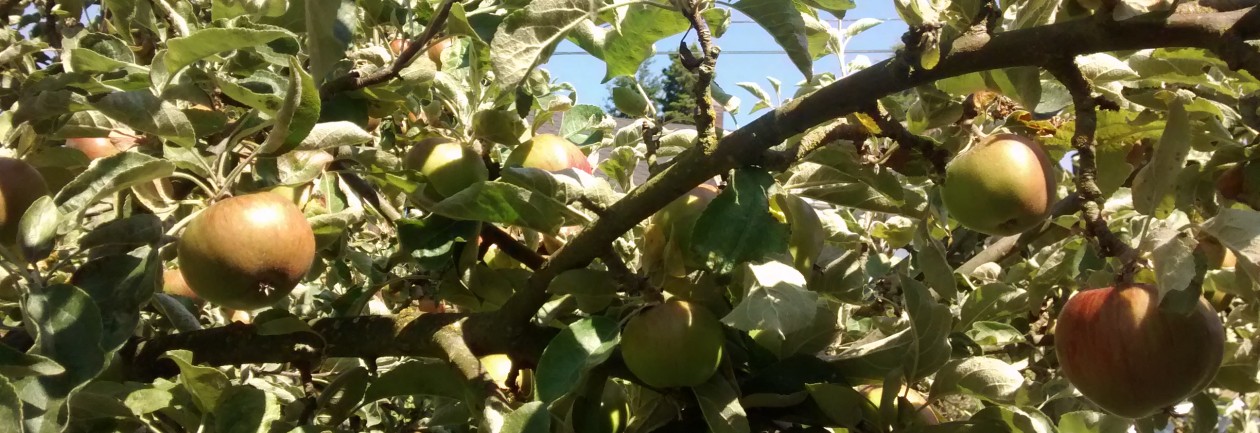As we move through liturgical time, we are called upon to embody the various mindsets that Torah wishes specifically to cultivate. During Pesach we meditate on the meaning of slavery and freedom, and in particular on freedom as being a fundamental embodiment of Divine intention for us, as intrinsic as life itself. I believe that as we move through the liturgical period of Shmita, we are called upon to embody an awareness of the earth as belonging to God, and to reflect and elaborate upon the implications that arise from this particular axiom of faith.
In Parashat B’hukotai, God reveals with utter transparency the purpose of the earth. We learn that the earth itself will bring forth the reward for building the society envisioned in Torah, by means of its rains, its soil, its vegetation. A hospitable climate leads to productive landscapes. Sufficiency and contentment allow us to be numerous and healthy, at peace internally, and so strong that our neighbors do not threaten us. As a result we find ourselves in possession of the inner and outer peace that we are told is the highest blessing that God wishes to confer on us, and for which we pray continually. The crown of these blessings comes when God builds a dwelling place in our midst and God’s presence moves about amongst us, as it did in Gan Eden. This is the unification that God wishes for us, and the earth plays a central role.
When seen from this point of view, what is the proper posture that we as a community should have toward the earth? Perhaps one model is the Sefer Torah itself. We treat the Sefer Torah with reverence. It is beautifully clothed. We handle it with care. We kiss it. We sing to it. If we drop it, penance is traditionally done by the entire community to atone for the lack of respect shown to a holy object. But if the Torah scroll is a holy object, what about the earth itself, which is also our teacher, also a gift from the Creator, also intended to be used by us for our good?
Part of the great challenge of Shmita lies in the fact that it is a collective mitzvah. While many mitzvot can be successfully accomplished on an individual level or the family level, in any facet of Shmita there is a communal aspect. Therefore, when we think about how to weave the religious fact or axiom that the earth belongs to the Lord into our culture, we need to look to the means by which a community works together, to the systems it has created for accomplishing collective goals. Within the realm of our daily lives, the world of our actions in the here and now, these means are primarily political and economic. It is, by and large, through our legal and economic systems that we work together as a community.
In our political system, land is owned outright, by individuals, governments and corporate entities, and there is little in the way of a cultural norm that would place its use into a “sacred” category. Legally, land is considered property which can be bought and sold.
As the Community Environmental Legal Defense Fund points out: “In the U.S., title to property carries with it the legal authority to destroy the natural communities and ecosystems that depend upon that property for survival. In fact, environmental laws in the U.S. were passed under the authority of the Commerce Clause, which grants exclusive authority over “interstate commerce” to Congress. Treating nature as commerce has meant that all existing environmental law frameworks in the U.S. are anchored in the concept of nature as property.”
Because this approach has proved problematic, there is a move within some circles to ascribe to nature, to natural objects and natural communities, political rights that can be upheld by the legal system. This would shift the status of certain features of nature from that of property to that of a rights bearing entity. The type of right that such an entity would hold would be along the lines of the right “to exist and thrive.” A person or group, self-selected or assigned by the government, would advocate on behalf of the natural object or community (a forest, a river, or a mountain, for instance) in a court of law, and a judge would decide between the competing interests of the human and non-human claimants.
On the other hand, the field of environmental and natural resource economics is developing methods for assigning economic value to natural systems, so that a forest, for instance, can assert that it possesses a value apart from sum of the price the owner can get for each of its trees. The ecosystem services model is an attempt to assign a total value to the forest that captures the value of each of the services it performs. It filters water, for instance, and prevents erosion. It sequesters carbon. It produces oxygen. It provides a home for animal species that may provide beneficial services such as pollination. It may have a recreational use value for people who hike through it. And it may contain species that are prized even for their “non-use” value by people who will never see them but may feel that they derive some benefit from knowing that the species exists in nature. Adding up all those values, one may decide that it makes sense to leave the forest in place, that is, if the money can be found to purchase it rather than allowing it to be harvested as lumber.
Both of these approaches are interesting steps that challenge the simplistic notion that the earth belongs exclusively to the human beings, governments, or corporate entities that legally “own” it. Both are attempts to take into account the widely perceived complexity of the human relationship with the earth. Both are rooted in our time and circumstance, and if elaborated upon may help to shift certain large scale collective behavior toward more desirable ends.
However neither of these approaches, nor both together, capture the full vision, the dream that Shmita invites us to contemplate. “You open your hand: Your favor sustains all that lives.” (Psalm 145) No laws, rooted in a place or time or culture, no economic paradigm, can do justice to this simple observation of Divine intent. And it is to that Divine intent that the Shmita seeker remains committed.
In the end, our tradition reminds us to keep one foot outside “the system,” whatever the system may be, whatever the time, whatever the country. Our laws will never be enough. Our economic system will never be enough. A parallax view will always be required to continue to bring us closer to ends which transcend ego and stand outside of time. This is the view afforded by our liturgical calendar, which now is now bringing us through the season of Shmita, in which we are asked to do what seems so impossible – to imagine and to humbly attend to the dignity of the earth as it fulfills the mitzvah of its Creator – to rest, while also manifesting through itself the open hand of God, its favor sustaining all that lives.


